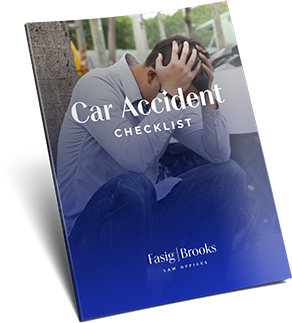
Part I
Negotiating a personal injury settlement is easy if you follow certain steps. The purpose of this post is to
lay out a step by step process for getting the most out of personal injury settlement.
The first step in negotiating a personal injury settlement is taken before any actual negotiating begins. Shortly after the accident happens, you should write a letter to the adjuster explaining the severity of the injuries. This allows you to inform the adjuster about the case, and allows the adjuster to adequately set the reserves on a case. This is important, because if the adjuster sets the reserves to low initially,
it’s very hard for him or her to go to management and ask for additional funds when the case is ripe for settlement. On the other hand, if the adjuster sets the reserves too high, he or she is a hero when the case settles for less than the reserves. So, it’s important to calibrate the adjuster’s mindset early on regarding the value of the case.
Shortly after the accident happens, you won’t know the full extent of the injuries, so it is important write the adjuster about all symptoms and to detail what type of injuries these symptoms could indicate. For instance, if somebody is suffering dizziness, you should
write to the adjuster, “Mr. X is suffering from dizziness, which is indicative of possible post traumatic vestibulopathy.” If somebody is suffering from numbness radiating into his feet, you should write to the adjuster, “Mr. X is suffering numbness radiating into his feet, which is indicative of a possible herniated disc impinging a nerve.” By extrapolating the potential diagnoses from the client’s symptoms, you are persuading the adjuster to consider the greatest possible exposure for the defendant, and allowing him to anticipate paying a large amount when settlement negotiations ensue.
You should supplement your letter with all medical records accumulated up to the date of the letter. A lot of attorneys wait until the client is finished treating before sending the medical records to the defense adjuster. In cases which involve more than soft tissue neck and back injuries, this is usually a mistake. The wiser approach is to send the adjuster periodic updates of medical records, indicating the client’s
injuries. Adjusters love this, because it allows them to adjust the amounts set for reserves as the case develops. I also like to send to the adjuster copies of MRI films or other diagnostic testing that supports the case, allowing the adjuster to have his own expert review the diagnostic testing and verify that the injuries are legitimate. I also like to send copies of my client’s prior medical bills early in the case. Some plaintiff’s attorneys don’t send the prior medical records unless requested, but I found that this is a huge delay, because in any case of any significance the insurance company is going to want copies of all prior medical records. You might as well send them ahead of time.
Another huge advantage of sending records before an official settlement demand package, is that it shortens the length of time it takes to get a response to the demand package. In many cases, the defendant’s insurance adjuster has already reviewed the prior medical
records and other documents, and is anticipating receipt of the demand package. I’ve had cases where the adjuster called me with a reasonable offer before I even sent a demand package.
So, the first step in negotiating a personal injury settlement is to send a letter with supporting medical documentation to the adjuster shortly after the accident, long before treatment is completed.
Part II
The settlement demand package should be prepared after the plaintiff reaches maximum medical improvement. Maximum medical improvement is the term doctors use to mean that the plaintiff’s physical condition is not going to improve with more medical treatment. The plaintiff reaches maximum medical improvement after all potential medical solutions have been exhausted. Before taking the
second step, it is important to ensure that there are no other available medical solutions for the client. For instance, many of my clients suffer from chronic pain. Many attorneys have their clients undergo chiropractic treatment or treawtment with a physiatrist, obtain a permanent impairment rating, then send a settlement demand without exploring other options. This is a mistake. If a personal injury client is still suffering pain after a course of chiropractic or physical therapy, that client should consult a pain management specialist,
and should probably undergo injection therapy, if the pain management specialist so recommends. Likewise, every client who has a potential surgical option should explore that possible option with an appropriate specialist. If the specialist recommends surgery and the surgery could alleviate the plaintiff’s symptoms, the plaintiff should consider undergoing the surgery before initiating settlement negotiations with the defense adjuster.
This is important for two reasons: If the plaintiff has the option of surgery to alleviate the symptoms and refuses, it is an indication to the insurance adjuster and to a potential jury that the symptoms are not severe enough to justify surgery. The severity of the symptoms is a major factor in determining the value of a case. Secondly, if the plaintiff refuses surgery, he will have a very hard time obtaining compensation for the costs of the surgery, the pain, suffering, and inconvenience related to the surgery, and the lost wages
incurred when recovering from the surgery. If the plaintiff settles the case before having surgery, in general he will receive substantially less money than if he waited and settled the case after surgery. I had one case that settled for $400,000 after a disc replacement surgery, whereas pre-surgery the adjuster had offered $20,000 to settle the case. I had another case that settled for the $200,000 policy limit after a fusion surgery, whereas pre-surgery the defense adjuster had offered $25,000.
Once the plaintiff has exhausted all possible medical solutions, the plaintiff’s attorney should write a settlement demand letter and supplement the letter with a copy of the police report, photographs of vehicle damage in automobile accident cases, photographs of the accident scene, copies of witness statements, medical bills, a mileage log detailing miles traveling back and forth from medical appointments, and any other evidence gathered that can support the claim. The demand letter should include a short summary of the
facts of the case, the plaintiff’s theory of liability detailing why the defendant is responsible for the plaintiff’s injuries, a summary of the
plaintiff’s medical treatment, a summary and list of the plaintiff’s medical bills, lost wages, and other economic losses, and a request that the defendant make a settlement offer to avoid litigation.
A lot of attorneys like to offer to settle for a specific number in the initial demand letter. This is a mistake. In any negotiation it is wise to get
the offer from the other side first. People who study the art of negotiation know that negotiation is about moving the other side closer to where you want to be. If you can do this without making any moves yourself, you have won the first battle. I always elicit the first offer from the defense adjuster. Rarely do I receive an objection. Insurance companies have a duty to try to negotiate their insured’s claims in good faith. If an insurance company rejects a request for a reasonable settlement offer, they could be setting themselves up for a
bad faith claim. So the second step in negotiating a personal injury settlement is to send a settlement demand package after the plaintiff has reached maximum medical improvement.
Part III
The third step in negotiating a personal injury settlement is to determine the value of the case. It is important to do this after you receive the first offer from the insurance adjuster. When I receive the first offer from the insurance adjuster, I never respond immediately with a counter offer. Instead, I call the adjuster and ask how he or she calculated this first offer. I ask hard questions and get details about how he or she calculated the offer. The answers to my questions give me important information on how I can most effectively negotiate with this adjuster. Adjusters don’t usually try to hide the ball. They let you know their defenses and what they consider to be the weaknesses in
the case. It is important to understand those weaknesses in order to properly place a value on the case.
Part IV
The fourth step requires utilizing a technique called “testing the waters.”
At this point, you have already received the first offer from the adjuster. You and your client have decided upon a reasonable settlement value for the case. Unless the adjuster is offering the policy limits, you should almost never accept the first offer. So, there will always be a difference between the amount of the first offer and the reasonable settlement value. I like to test the adjuster to see how firmly he or she will stand behind the first offer. In appropriate cases where the initial offer is too low, I call the adjuster and explain that the first offer is too low for us even to consider making a counter offer. I then ask the adjuster to increase the first offer to an amount that gives my client some hope that a reasonable pre-suit settlement is possible.
This accomplishes two things. Sometimes it elicits a better offer from the adjuster. This happens more often than I would expect. Even if it doesn’t elicit a better offer with the adjuster, it gives me the opportunity to see how strongly the adjuster feels about the initial offer. If the adjuster thinks her unreasonable first offer is reasonable, it lets me know that I should go ahead and file a lawsuit before making an initial counter offer. There is no need to submit a fruitless offer. If the adjuster indicates she has substantial room to move, I know that it’s safe to make a counter offer without fear of showing my hand too early.





